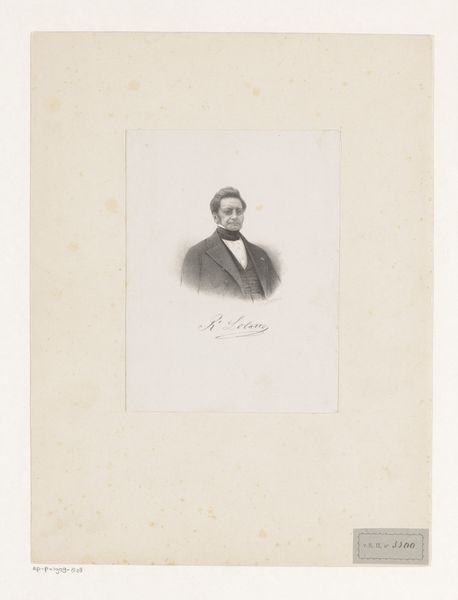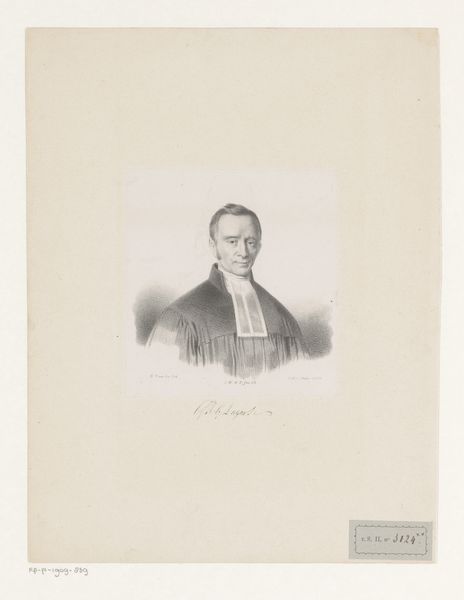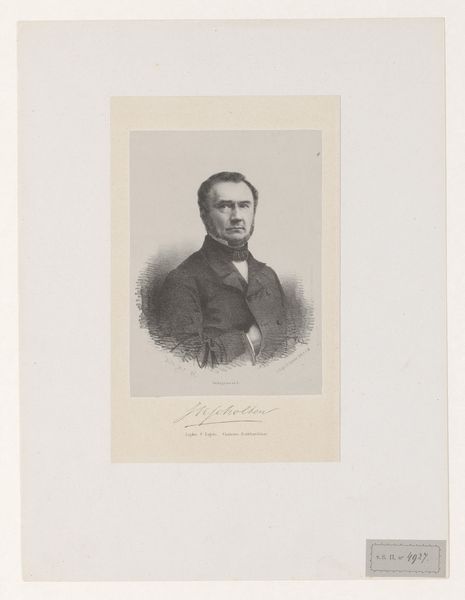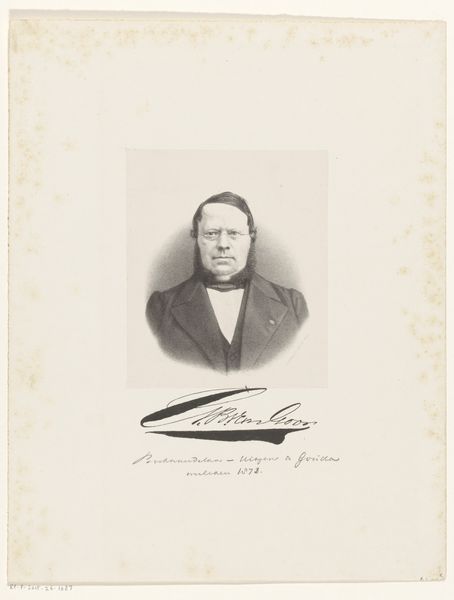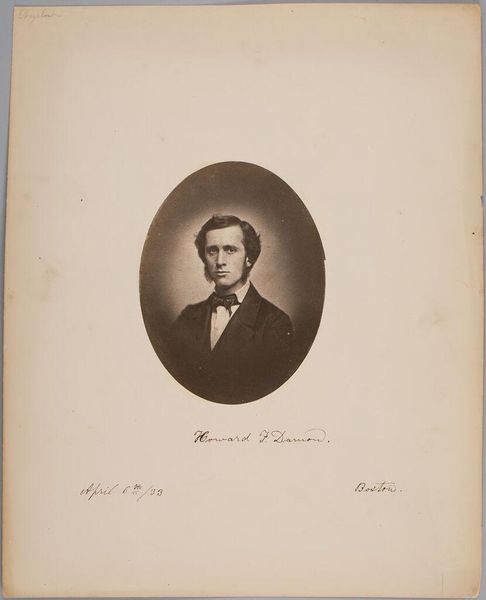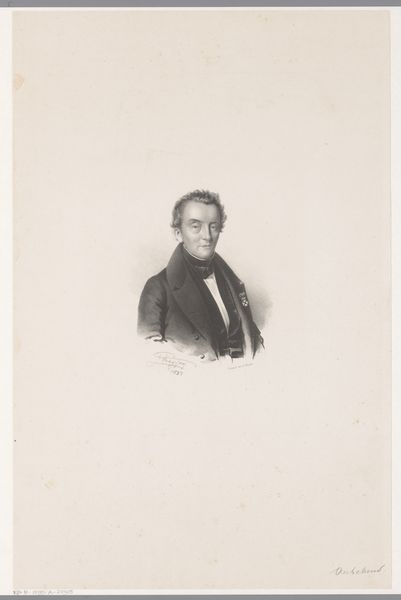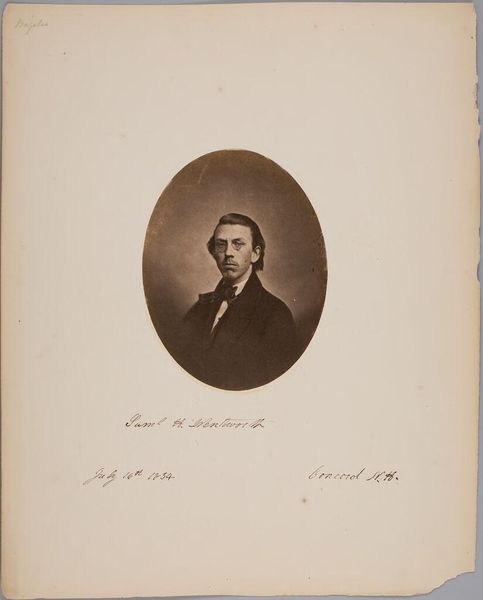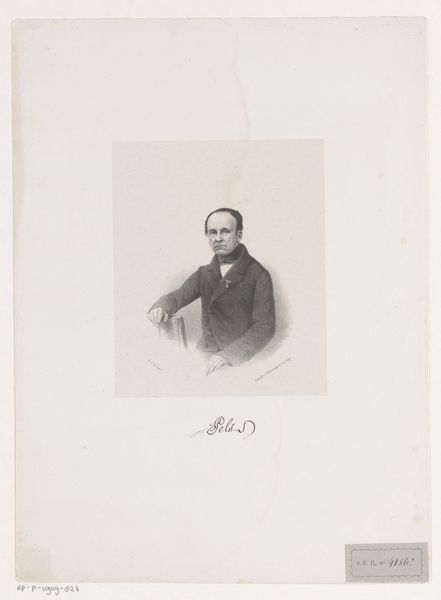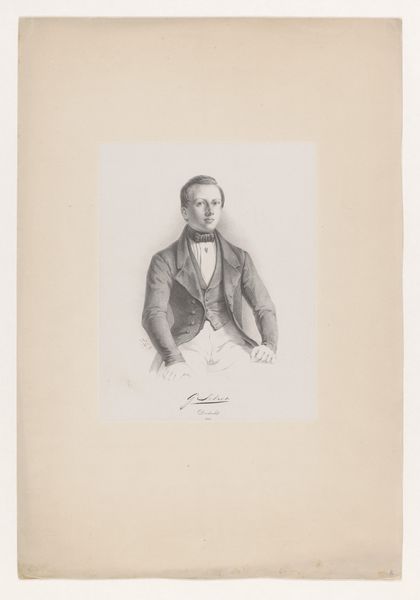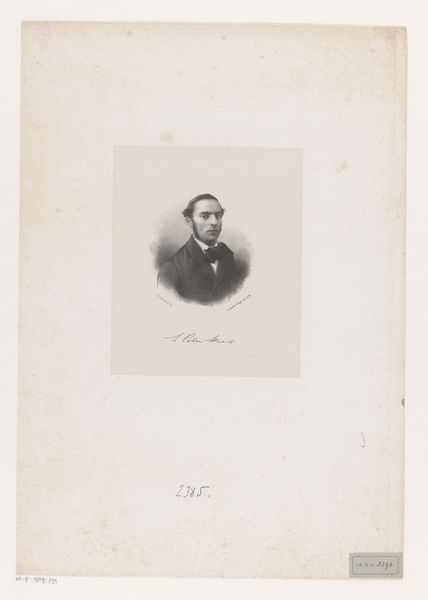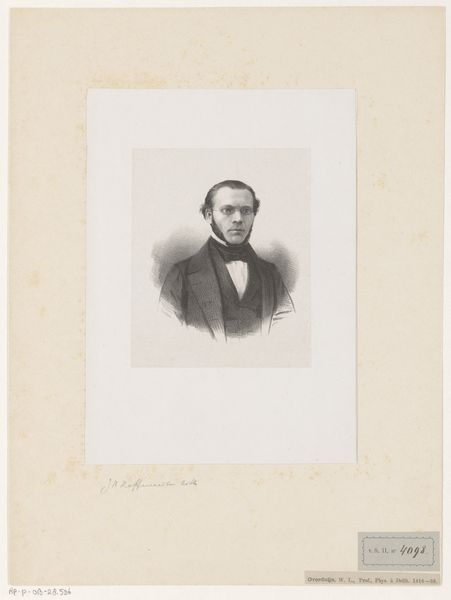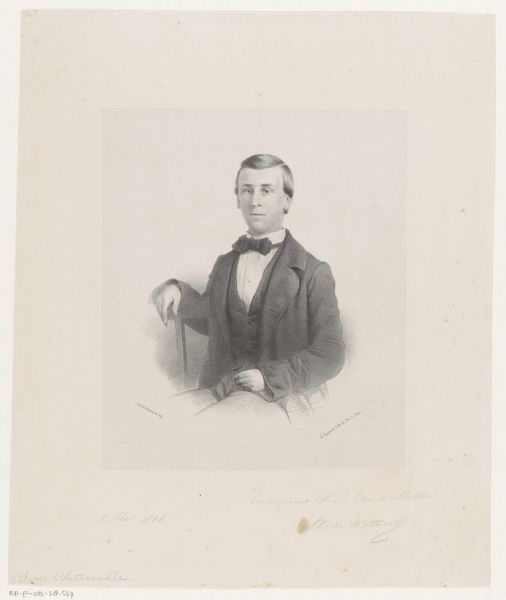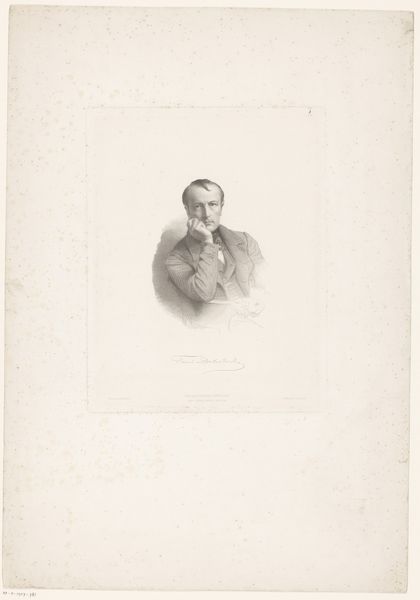
#
portrait
#
16_19th-century
# print
#
realism
Dimensions: height 250 mm, width 150 mm
Copyright: Rijks Museum: Open Domain
Curator: Before us is an 1842 print from the Rijksmuseum collection, titled "Portret van Willem Josephus van Zeggelen," crafted by Dirk Jurriaan Sluyter. Editor: It’s a striking piece, but my first impression is that it feels quite formal, almost severe. There's an undeniable air of bourgeois seriousness in the man's posture and attire. Curator: Indeed, portraits like this served a specific function: to immortalize and legitimize social standing. The symbols are overt, from his respectable suit to his neat bow tie. Even the crisp paper around the print adds to this image. Editor: That formality does point to some crucial contexts about power in that time. In whose interests are these portraits really made? This man wants us to believe he is respectable, and the image participates. What about the people missing from the historical record, I wonder? Curator: Those absences haunt our reading of the piece. But the fact that the artist uses realism means that he attempts a certain psychological likeness of van Zeggelen, something the Romantics aimed for in portraiture. Even now we see the individual person there, amidst the societal posturing. The use of print allows multiples to be distributed and copied which speaks of its intent as propaganda or advertising too. Editor: It is very sharp for a print from 1842, and that speaks to me of the values attached to industry and productivity which were very much a part of this historical moment. Also, the written text on the right-hand side looks fascinating... Curator: The signatures below the portrait, alongside the handwritten lines to the right, introduce further layers of authentication and admiration. There is the inscription as well as van Zeggelen's own signature, which makes one question what value was attributed to personal identity during this historical period. Editor: All that text amplifies that air of authority, doesn’t it? For me, that just re-emphasizes that tension I felt when looking at it initially: an individual frozen in place by social convention. Perhaps now that I think about it more I should feel sorry for van Zeggelen rather than judge him. Curator: Perhaps, in recognizing both the subject and the artist's conscious effort to imbue the portrait with significant symbolic value, we gain greater insight into that era's identity. Thank you for sharing your insights today. Editor: Thank you; reflecting together allows for a nuanced approach, as we both draw insight through art!
Comments
No comments
Be the first to comment and join the conversation on the ultimate creative platform.
